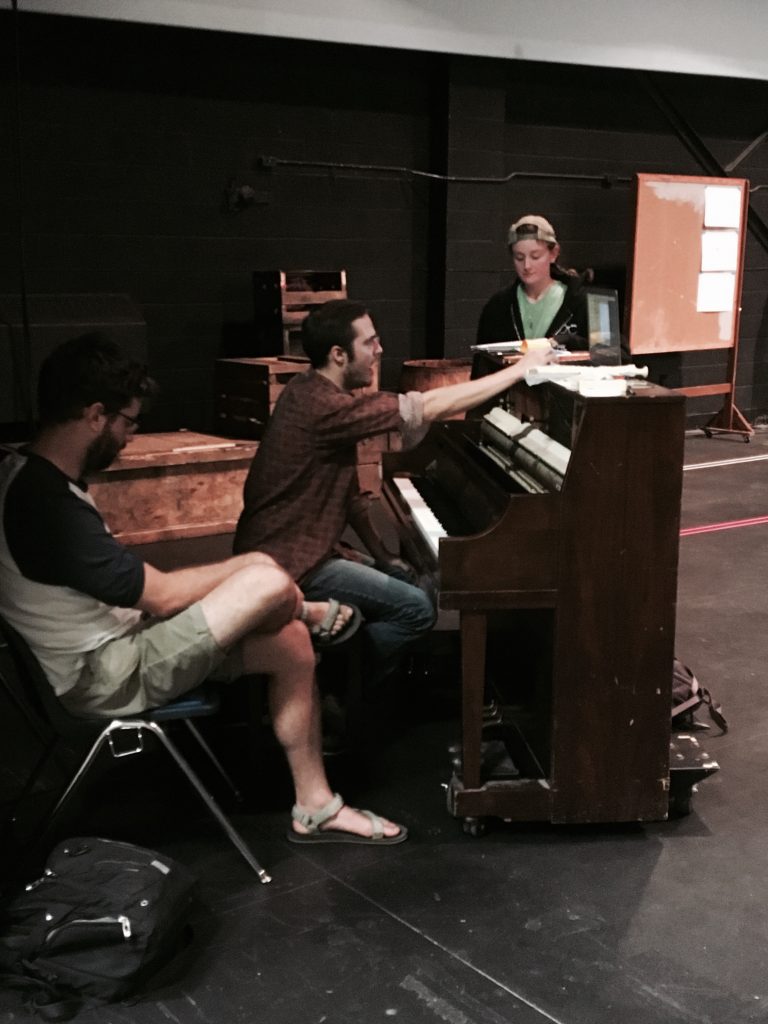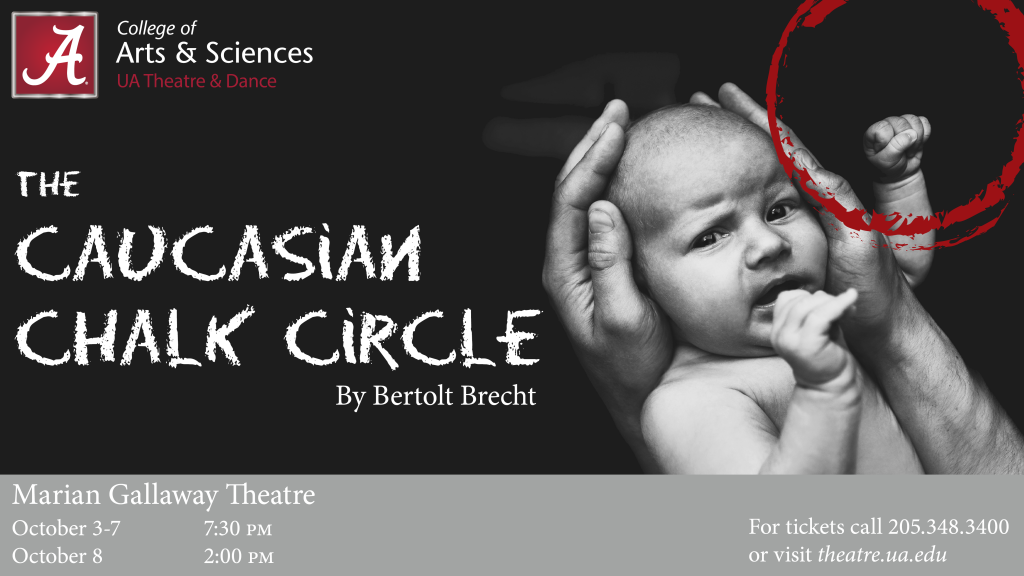Assembling an Epic Score: Student musicians put a new twist on old techniques in The Caucasian Chalk Circle
By Nathaniel P. Reid
The Caucasian Chalk Circle by Bertolt Brecht is not a musical. Azdak doesn’t tap-dance while delivering sentences and Grusha doesn’t bring the audience to their feet by belting out a genre defining 11 o’clock number. However, as is often the case with Bertolt Brecht and his works, The Caucasian Chalk Circle is referred to as a “play with music”, where music and musicians have a large role in the plot. When it came to creating the pieces of music that would feature in the production, director Annie G. Levy turned to UA School of Music students Colin Kemper and Killian Afzalirad.
After accepting the project last semester, Kemper and Afzalirad immediately read the play and began working out the score. The score is used in a play to remind the audience about the feelings present in a particular scene. “When a song comes in it enhances that moment.” Said Kemper, a Graduate Composition student and jazz clarinet player from Baltimore, MD. “If Grusha is going to sing to Simon, you can imagine how a lover singing in that moment or being really kind of desperate in that moment would sound and the song, hopefully, adds another layer to it and bridges that thematic gap.” Kemper further illustrated the idea of character behavior being personified in their piece of the score.
The two songsmiths recounted how insight from director Annie G. Levy helped them with their composition: “Colin and I have been writing aside from everybody and we would talk with [Levy] every so often about what we’re doing and getting her idea of what the vision for the scene is.” Recounted Afzalirad, a Senior Composition student, songwriter and lyricist from Mobile, AL who started off as a Musical Theatre major at UA before switching to Composition. “When we’re originally reading it we may not be understanding the tone that we’re supposed to be going for there. It’s been a process of figuring out what the tone is, writing music that supports that tone and that moment.” Kemper, working on a play for the first time and loving it continued: “Working with Annie is wonderful. She knows what she wants and communicates that very effectively. I’ve been learning constantly through this process. It’s awesome to be on a Skype call over the summer and we would say ‘this is what we felt was happening’ then she would add a whole bunch of new layers to the character and then we’re like ‘that’s awesome!’ and that would open up so many doors for us to experiment musically.”
Kemper and Afzalirad went on to describe the musical influences of their score: German, Gypsy, Hebrew, Indo-European, Eastern European with a primary focus on traditional Georgian music and Persian music. For this production, they fused traditional music from those regions with basic traditions of western music.
Ultimately, the excited pair of composers were very happy that Dr. Amir Zaheri in the UA School of Music made the introduction between them and Levy. “We feel very lucky to be working with such talented actors and musicians. They’re all doing our work more than justice.” Beamed Kemper. Afzalirad, echoed the satisfaction of seeing their work in good hands. “Absolutely! It really is amazing to see your work come to life because it goes from me and Colin screaming at each other in his living room, not angrily of course but we’re reading the dramatic dialogue and we get very into it sometimes, and it goes from us saying ‘What if we do this? Yeah! We should do that! Yeah that’s awesome!’ from all of that to really seeing some pure, touching moments. We were in callbacks and I got chills watching people do stuff that we wrote. And that is a feeling that can’t really be topped.”
The Caucasian Chalk Circle runs October 3-8 in the Marian Gallaway Theatre on The University of Alabama campus. Tickets are $20 for adults, $17 for Faculty/Staff and $14 for students, available in Rowand-Johnson Hall at the ticket office, by phone at 205.348.3400 or online at ua.tix.com. More information on this production and the rest of the UA Theatre & Dance season can be found at theatre.ua.edu.

